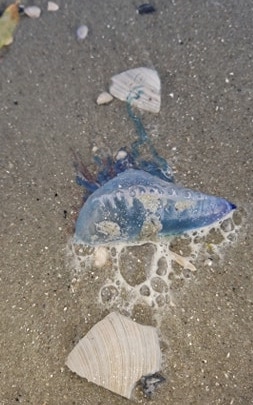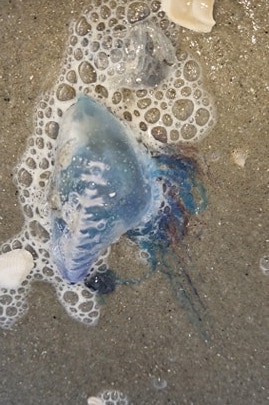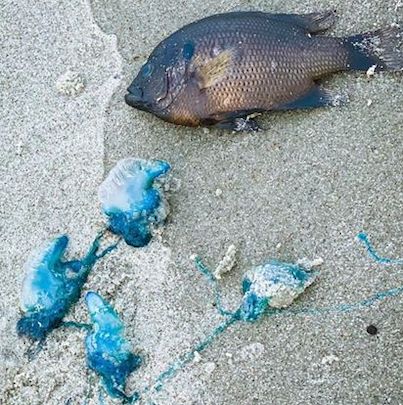The National Weather Service on Wednesday says it has received a report from a North Myrtle Beach lifeguard that “a couple hundred” Man O’ War have washed ashore. One’s tentacles measured 16 feet, according to the report.
A viewer submitted a photo of a Man O’ War found on the beach between 35th Avenue South between Atlantic Beach and the North Myrtle Beach city limits.
Another viewer sent a photo of one found at Surfside beach, south of the pier.
When there are large numbers of them in an area, it is best to avoid swimming, according to Oceana. Their sting can be very painful. It is a predatory species, using its feeding tentacles to sting and paralyze small fishes.
We’re getting multiple lifeguard reports of man o’ war jellyfish along Myrtle/North Myrtle Beach and Wrightsville Beach. One apparently washed ashore on North Myrtle, and had tentacles measuring 16 feet long.
— NWS Wilmington NC (@NWSWilmingtonNC) May 28, 2020
Remember to heed the advice of lifeguards. Stay safe out there!
Fun facts about the Portuguese Man o’ War from Oceana
1. The Portuguese man o’ war is not a jellyfish, but rather a siphonophore, which is a colony of specialized animals called zooids that work together as one.
2. The Portuguese man o’ war doesn’t swim. Instead, it uses wind and ocean currents to propel it forward.
3. The Portuguese man o’ war was named after its resemblance to 18th century Portuguese warships.1
4. The Portuguese man o war’s float can be up to 6 inches (15 cm) tall.
5. The Portuguese man o’ war’s tentacles grow as long as 165 feet (50 m).2












